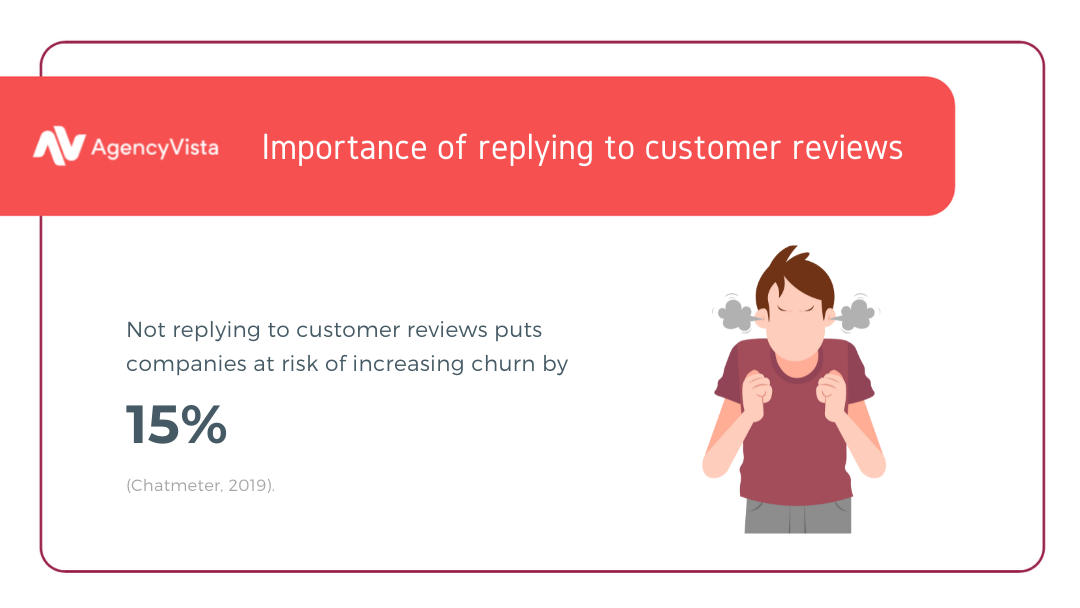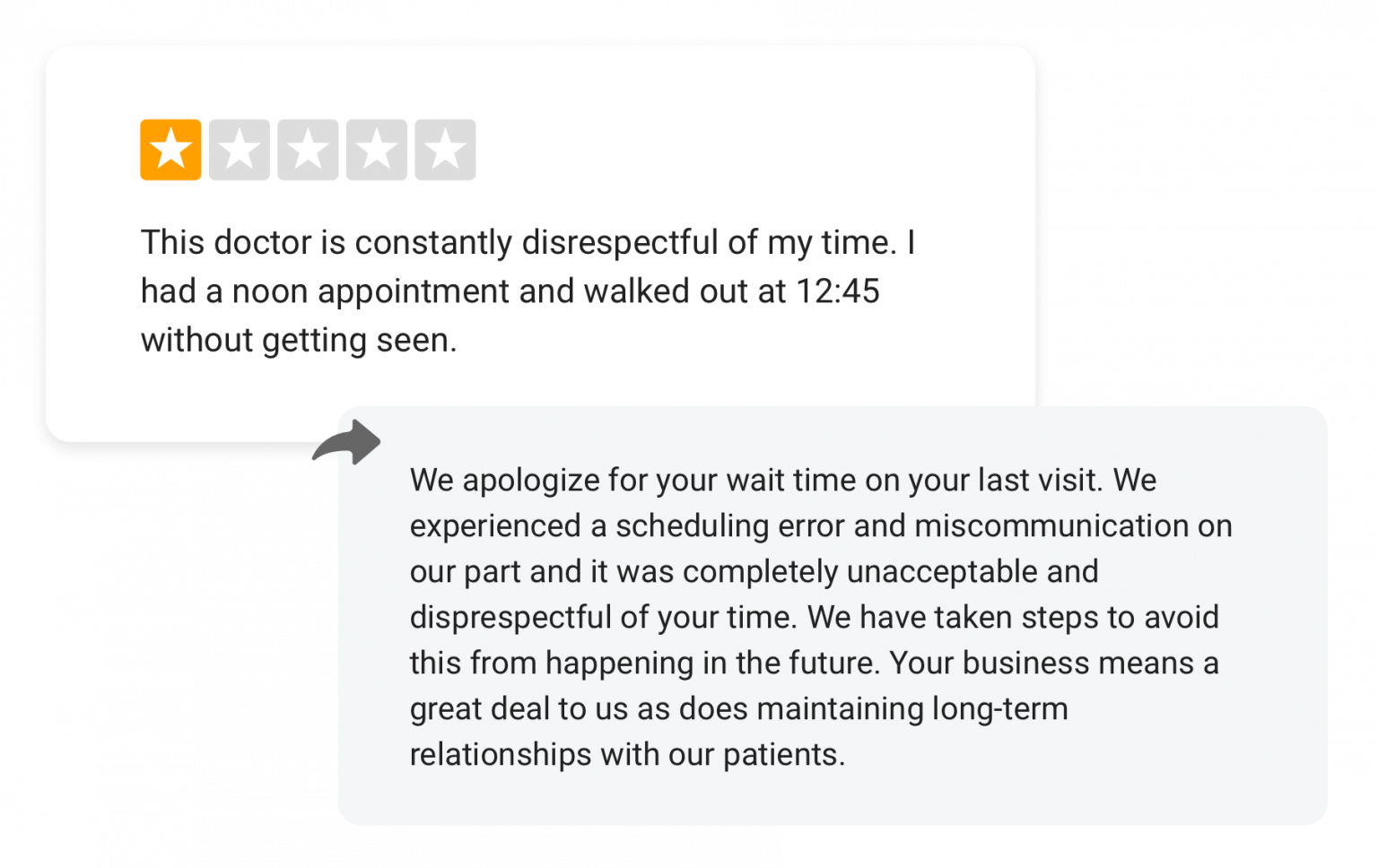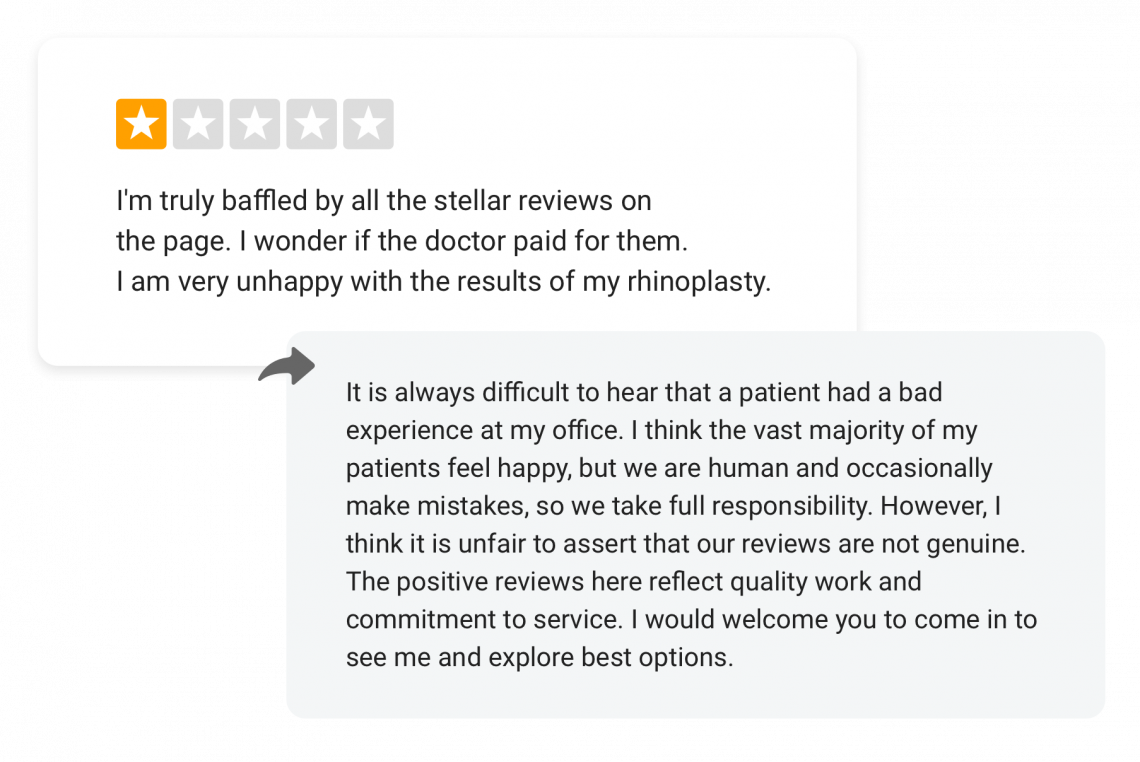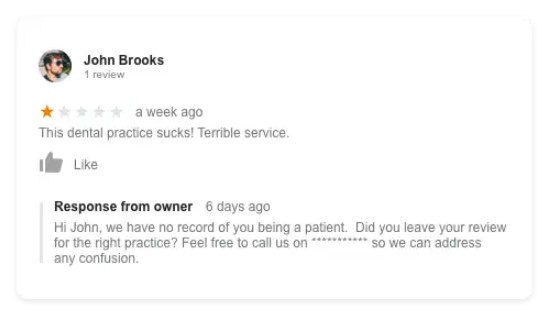August 2, 2021 - Natalya
Customer Criticism: How to Respond to Criticism Effectively
Customer criticism is an opportunity to collect information about their needs, opinions, attitudes, and beliefs. With more platforms available to customers to leave their online reviews, it’s no doubt that businesses could get receive a wave of customer criticism. And although you may not want to follow up on these messages, you could hurt your business more by not responding.
Importance of replying to customer reviews
- Not replying to customer reviews puts companies at risk of increasing churn by 15%. (Chatmeter)
- 89% of consumers read replies to reviews. (BrightLocal)
- Seven out of 10 consumers changed their opinion about a brand after the company replied to a review. (Marketing Charts)
Working with reviews is an essential element of customer-oriented marketing. Whether you are an agency managing a brand’s online profiles or a business looking to manage your online reputation better, your professional success depends on your ability to take criticism. Agency Vista has picked up the essential tips on how to handle customer criticism in 2021.
Key Reasons Why Clients Criticize a Business
If you look through any marketing work, you can find different variations of one phrase: “A satisfied customer will be satisfied, and a dissatisfied one will share his dissatisfaction with 50 others.” Moreover, always and everywhere you can meet envious people, critics, competitors, and, of course, friendly, adequate people, who face some problems when using your product or service.

Think of your own experiences when you feel dissatisfied with a product or service and the business takes the time to acknowledge your experience; you generally feel less frustrated with the situation. However, on the other hand, if you’re dissatisfied and the business doesn’t try to rectify the situation, you want to let everyone know about your poor experience with them.
The Three Types of Negativity in Customer Criticism
1. Constructive customer criticism

Constructive criticism occurs when people have encountered a problem and are looking for a way to solve it. Usually, the essence of the problem and the cause of indignation are indicated here. This kind of negativity can and should be considered normal because no one is immune from errors and technical failures. Therefore, view such negative comments as an incentive for development and try to benefit from them.
As a rule, after solving such situations, adjustments are made to the business processes within the company. If this is not done, the problem may repeatedly occur, causing a negative, which, ultimately, will lead to a damaged reputation.
2. Emotional negativity

This is when a person is in a bad mood, and you are in the wrong place at the wrong time. Such a negative comment is one of the most unpleasant and insidious. It is based on emotions, rumors, speculation and is often written in a brutal manner. Please do not wait for a constructive description of the problem, as in the case that we discussed above. Do not forget about professionalism and never answer in the same rude manner. Unfortunately, any brand’s harsh response can provoke a flurry of indignation from other users and reduce the company’s rating. Learn how to respond to negative social media comments if you have any.
3. Trolling or Spam Reviews

Trolling is a type of malicious comment addressed to you, which can sometimes be confused with emotional negativity, but, unlike the second, the troll has fun in this way.
Trolling is primarily a provocation. Someone consciously brings you to emotions and sometimes not the most positive. The most important thing is to control yourself and not get involved in the conflict. Remember that other people are reading you; pay more attention to them by responding to the troll’s attacks.
Knowing which type of criticism is coming your way can help you make better use of criticism. And remember, if a client’s feedback is compassionate, specific, and matches your emotions and motivation, the critic is trying to help.
How to Handle Criticism From a Client
Now when you know that not all the criticism is aimed to injure your business, you can go further and discover how to use a client’s criticism for the best.
1. Get rid of emotions
Most often, unhappy customers write on emotions. Try to stay calm and do not answer if you are very annoyed. This will be immediately visible in the comments and will only strengthen the negative. Do not be rude in response since the main task is to reduce the flash of negativity on the contrary and turn the conversation into a constructive direction, if possible.
Some business owners take criticism as a personal insult, but it is not the case. And, this recommendation does not call for cold and indifferent communication. On the contrary, you need to show interest and empathy — empathy always causes a positive reaction. Your calmness and goodwill are the first steps on the way to a quick solution to a conflict situation.
2. Constructive or destructive feedback
Constructive feedback is written most often with no emotions and to make your product or activity better from the point of view of a satisfied customer. Ignoring constructive criticism can lead to the loss of customers and potential profits.
Here is the checklist of a constructive review:
- It focuses on how something can be improved and corrected — on solving the problem.
- It appeals not to the personality of the criticized person but exclusively to the patterns of behavior and actions that are not optimal for others.
- It emphasizes that the criticized person can achieve more/improve something.
On the contrary, a bad review has the following characteristics:
- It focuses on the negative consequences of the actions of the criticized one and blames them for mistakes.
- It is emotionally (negatively) colored.
- It emphasizes the personal shortcomings of the criticized person;
- It devalues the attacked person.
Do you feel the difference? Your reaction to criticism should vary depending on its intention.
3. Thank those who came to you with constructive customer criticism
The proper response to customer criticism is to demonstrate to the person that your relationship with him is safe by saying: “Thank you.” It will not be challenging to do this if you remind yourself that constructive feedback is a manifestation of care. At the very least, the critics took the time to evaluate your work. As a maximum, they sincerely want to help.
Think of the critic as your ally, not your enemy. Perhaps now you hear not the most pleasant words, but with their help, your business will be able to become better. Discuss what has become the object of criticism and extract as much benefit as possible from the situation.
4. Apologize for your weak points
Apologies are the expected behavior of a person who recognizes a problem and wants to solve it. In business, this is an integral growth strategy. An apology does not always mean that you are wrong and the other person is right. You simply can say, “I apologize for your frustration and am here to help find a resolution”.
The exact scenario you should create depends on the situation you are apologizing for: an apology for a delay in delivery will be different from apologizing for misleading advertising.
Six steps that will help you apologize in a way that will benefit your company:
- Apologize publicly if the situation requires it.
- Respond promptly.
- Explain what went wrong.
- Offer an incentive.
- Remember that it is important to apologize and pay attention to how it is presented to the client.
5. Do not take customer criticism personally
No one likes to hear criticism of the work done. However, increased sensitivity to criticism can become a real burden that you will have to bear throughout your business career.
The negative feedback is often not addressed to you personally; it is a review about your company. Therefore, it is essential to draw a dividing line between the criticism inherent in it and criticism explicitly directed at you as a person when receiving negative feedback.
Having learned to cope with criticism once, the next time, you will be able to recover much faster while remaining a professional in your field.
6. View the feedback from your critic’s point of view
Putting yourself in the shoes of your critic will allow you to look at the situation through the eyes of another person. Also, this way you can better understand the reasons for your customers’ dissatisfaction. They are angry and rude to you, not because they want to offend you personally. They might be upset since they trusted your company and you let them down. Empathy will help you get closer to the interlocutor and want to help him.
7. Do not defend, but ask questions
The two main methods in communicating with a critic are clarifying questions and focusing on details. They help to sort out a categorical message into components that you can work with.
With detailed questions, we turn attention from the error to the methods of its correction, and most importantly – how not to repeat it next time. Next, focus on actions that are expected of you and the details that prevent the adequate performance of the work. Then, together, discuss how to overcome the same problem next time.
8. Speak up your mind
Some critical comments do not coincide with our views and ideas about the specific situation. Therefore, it is crucial to express your opinion and feelings openly. Do not be afraid to speak up when you get a chance of being heard. There is no need to ignore your feelings.
Clients are ready to accept and understand much more if they are explained decently and tactfully. This can help the critic to see the situation from different sides and take into account your feelings. If both interlocutors are calm and ready for a constructive conversation, the confrontation can turn into a discussion, and that – into full-fledged cooperation.
9. Request time to follow up
Even if you respond to negative reviews politely and quickly, it will not matter if you do nothing to solve the problem. Not every complaint has a quick fix solution, and sometimes you need to connect internally with different departments to see what exactly happened.
In this scenario, it’s best to let the customer know that you have passed along the information to the team, investigate the issue, and connect back with them when it has been resolved. Making notes internally can help resolve future complaints more effectively and timely. Proper processing of negativity can increase the level of trust in your brand.
10. Analyze the clients’ criticism and learn a lesson
Feedback from your audience can give you meaningful information about improving the quality of products or services. Otherwise, working with negative reviews will not make any sense.
Of course, negative comments are not always a signal of severe problems in the company. But if you work out each of them, it is easy to understand what shortcomings can be corrected. Make sure to learn a lesson, and the results will not keep you waiting.
Conclusion
There is a human factor, system failures, and other errors that can cause customer dissatisfaction in running any business. Therefore, no matter how perfect your product/service is, some people will still be negatively disposed. And it is not about apologizing in response to every complaint, but about letting your clients know that they are appreciated and you are doing everything possible to solve the problems that arise.
If you’re a marketing agency scale your online reputation with Agency Vista’s plans — get started today, for free!
If you’re a business looking to improve your online reputation, check out the top reputation management marketing agencies.
Grow with the #1 marketing agency network and top destination for businesses to hire
Sign up for Agency Vista, and see why over 50,593 marketing agencies trust us to grow their online presence and foster credible relationships with businesses. We’re free forever, and you can upgrade, downgrade, or cancel any time.
Get Started
Get started free
Setup in minutes
No credit card required

Agency Vista is the new way for brands to find and easily connect with marketing agencies. Explore 50,593 verified profiles and reviews to find the right agency for your business.
Copyright © 2025 Agency Vista LLC. All rights reserved. Lovingly made in NYC.